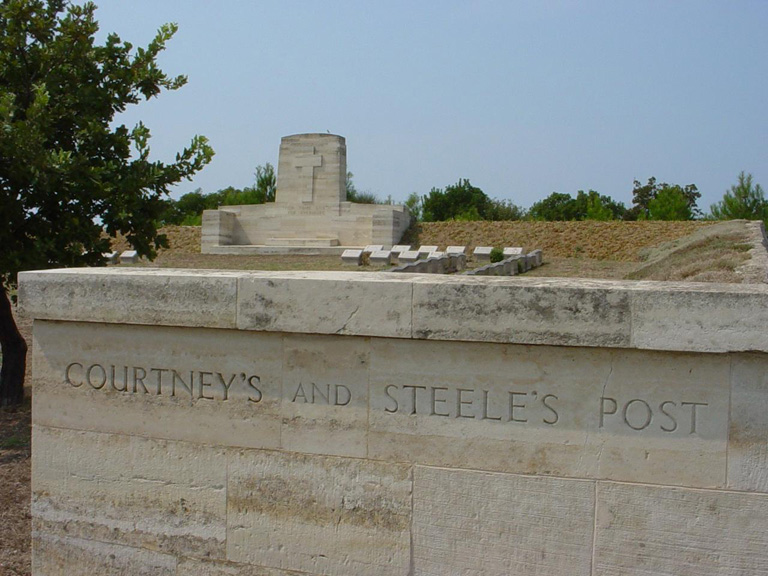Courtney's And Steel's Post Cemetery
- Country Turkey (including Gallipoli)
- Total identified casualties 65 Find these casualties
- Identified casualties from First World War
- GPS Coordinates Latitude: 40.2354, Longitude: 26.28902
Statement from the CWGC regarding fires in Gallipoli
The Commonwealth War Graves Commission (CWGC) is deeply concerned to learn that large fires, reportedly started by an electrical fault, have burnt historical areas of the Gallipoli peninsula in Türkiye.
Location information
The Anzac and Suvla cemeteries are first signposted from the left hand junction of the Eceabat- Bigali road. From this junction travel into the main Anzac area.
At 11.1 kms. from the junction Eceabat- Bigali, the cemetery will be found on the left hand side of the road.
Visiting information
The Cemetery is permanently open and may be visited at any time. Wheelchair access is possible via the main entrance.
Please note that in the absence of a cemetery register, visitors are advised to locate the Grave/Memorial reference before visiting. This information can be found in the CASUALTY RECORDS within this page.
For further information and enquiries please contact enquiries@cwgc.org
History information
The eight month campaign in Gallipoli was fought by Commonwealth and French forces in an attempt to force Turkey out of the war, to relieve the deadlock of the Western Front in France and Belgium, and to open a supply route to Russia through the Dardanelles and the Black Sea.
The Allies landed on the peninsula on 25-26 April 1915; the 29th Division at Cape Helles in the south and the Australian and New Zealand Corps north of Gaba Tepe on the west coast, an area soon known as Anzac.
Courtney's Post, towards the northern end of the original Anzac line, was named from Lieut-Colonel R E Courtney, CB, VD, who brought the 14th Australian Infantry Battalion to it on 27 April 1915. Steel's Post was next to it on the south-west and was named from Major T H Steel, 14th Battalion. Both these positions were occupied on 25 April 1915 and held until the evacuation in December.
There are 225 Commonwealth servicemen of the First World War buried or commemorated in the cemetery. 160 of the burials are unidentified but there are special memorials to 58 casualties believed to be buried among them.


